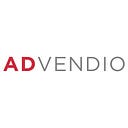Why Your Next Out-of-Home Advertising Campaign Needs a Comprehensive Ad Management Software
All advertising campaigns require comprehensive management, from traditional media outlets such as radio and TV to digital media placement, including out-of-home advertising.
For far too long, OOH has been an old-school process, requiring manual methodology to place ads in front of individuals. However, this can be inconvenient, especially when placing a variety of ads across a range of channels. It is easy for data to get lost, misinterpreted, or unintentionally excluded, resulting in a fragmented picture of campaign performance. Rather than allowing traditional approaches of out-of-home advertising to cost businesses, ad management software is integral to keeping up to date and to staying competitive. Digital out-of-home spending is up 80% in the US since Q2 2020, therefore, staying updated means putting the right tools in place. Having the ability to track placements, availability, finances, and campaign delivery all in one centralized solution, the new era of OOH campaign management software can be key to driving success.
The Benefits of Out-of-Home Advertising Management Software
OOH, ad management software offers many advantages across all departments, including who’s buying, placing, or managing ad campaigns.
Centralized Campaign Management
Centralized campaign management is a core benefit of any ad management platform, providing a solution to the highly fragmented modern advertising ecosystem. By combining various tools that report on KPIs and other analytics, it’s possible to bypass manual processes prone to error for a more efficient approach to data consolidation.
For OOH media companies, a cross-media strategy can be essential for integrating ad servers, exchanges, DMPs, and other external platforms. From ensuring cost-effective implementation at the start of a campaign to reporting accurate numbers throughout, centralized resources make a once-taxing process faster and far more effective.
Omnichannel Inventory Management
Selling inventory across multiple channels is a common pain point for many companies. Without one central place to manage placements, it takes an immense amount of effort to control inventory data and present customers with up-to-date solutions. This is challenging in the OOH space, where an ineffective approach to ad operations may result in overbooked inventory, errors in placements, and missed opportunities.
Omnichannel inventory management makes it more efficient to manage inventory availability, quantity, and pricing on an ever-changing basis. Furthermore, it can meet customer needs more effectively. In an industry where a bad interaction can damage customer relationships, staying up-to-date on industry advancements can result in consistent revenue in the future.
Enhanced Cross-Media Ad Sales
With so many ad placement options to choose from, few customers want to exist in a single space. For those who want to take advantage of varying placement avenues, including OOH, a cross-media strategy can help automate all aspects of the ad sales process, including invoicing and payouts, without complex manual activities.
Ad sales, even in the digital era, has long been dominated by time-consuming steps. With a cross-media strategy, it’s possible to offer accurate, timely data on performance across all advertising spaces. This can create a seamless approach to selling across multiple media platforms, giving all team members immediate access to relevant information throughout every stage of the process.
Streamlined Ad Placements
Placing ads can be time-consuming, particularly when multiple systems with different approaches are in place. Meeting requirements for each supply-side platform can become complicated, with significant effort and time required for operating an omnichannel campaign. This can also lead to difficulties with inventory, as making mistakes with inventory being purchased for the correct dates and the correct schedule can easily happen.
A streamlined ad placement solution takes the manual work out of the process, allowing access to multiple SSPs through predefined templates. With a smooth, simple approach, the likelihood of error goes down — and the likelihood of customer satisfaction goes up.
Real-Time Campaign Planning
Planning an ad campaign can take a lot of time and effort, especially when there are many moving parts. From creating designs to implementation, a lot goes into getting an OOH campaign live without sacrificing oversight.
OOH, ad management software, however, takes most of the onus out of planning. It’s possible to keep a record of progress, maintain important information in an easily accessible place, and have the opportunity to make last-minute changes — a historically challenging or even impossible task when manual processes are involved.
Smooth Third-Party Contract Management
Keeping track of contracts is important in OOH management, but can be difficult, particularly without technological support. With varying timetables, many property owners, and a variety of campaigns to manage, it’s easy to let important aspects be overlooked.
The right OOH order management system can keep contracts and time-based payment agreements organized and easily accessible, including single payments and revenue shares. An automated workflow can make sure the right people are paid at the right time for the correct ad placements.
Why Should You Implement An OOH Advertising Management Software?
With the extensive benefits outlined above, from real-time planning to streamlined placement, the right software solution can result in better time management, cost savings, and increased customer satisfaction, thus making an out-of-home advertising management software a strong recommendation for OOH companies looking to make their processes more efficient.
